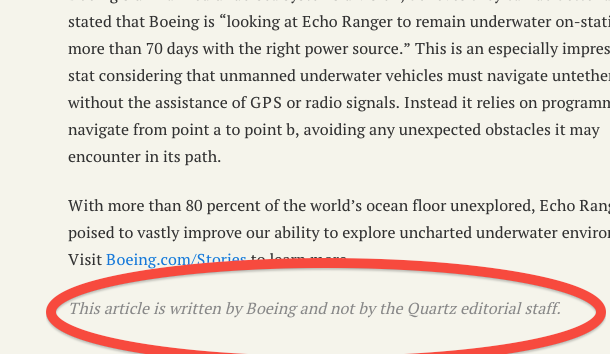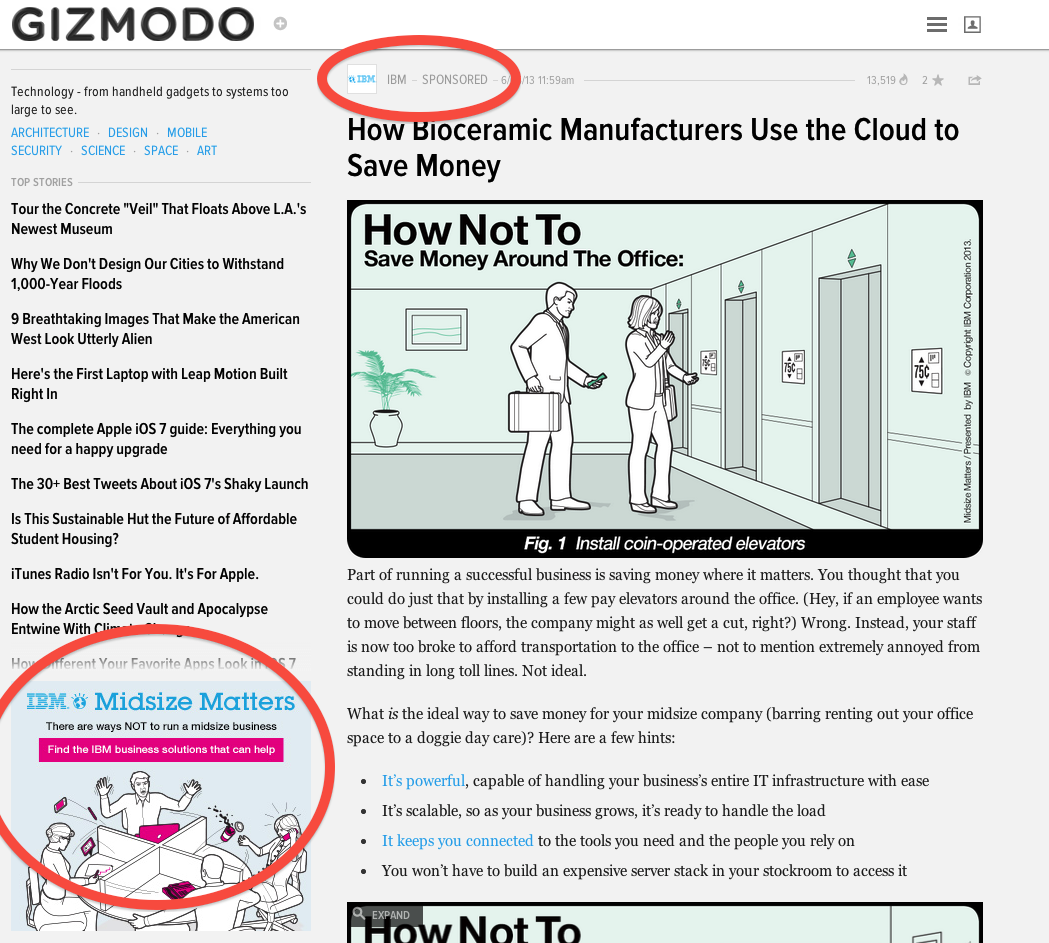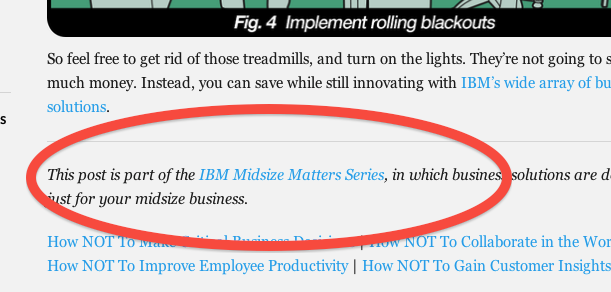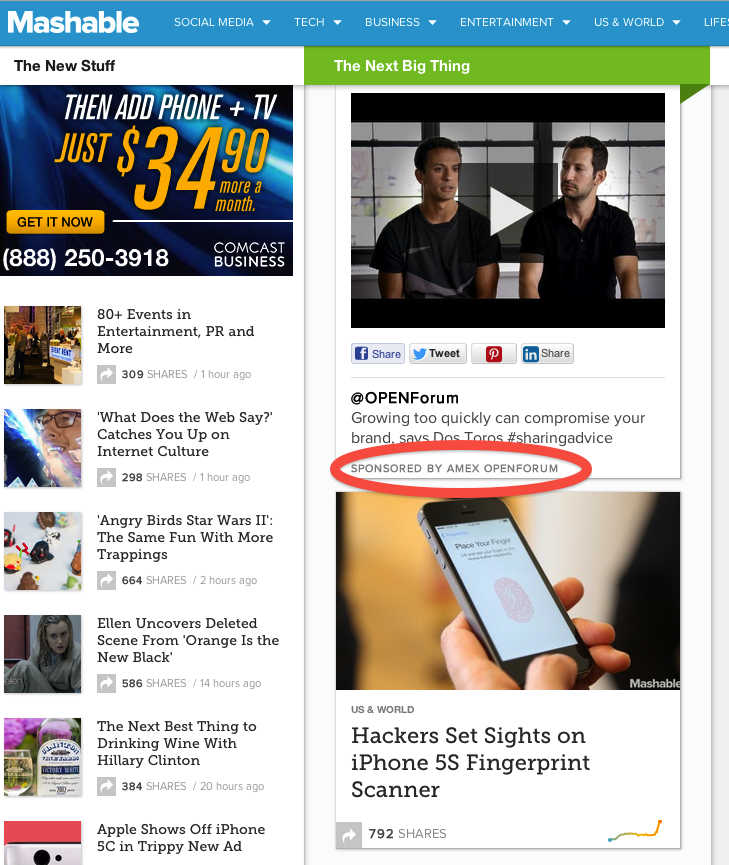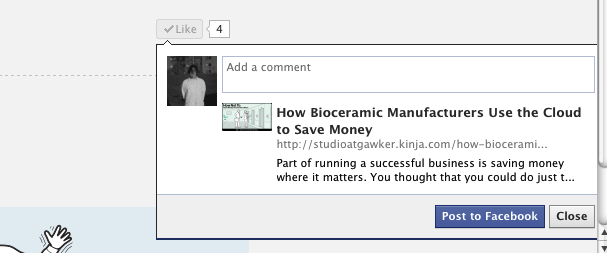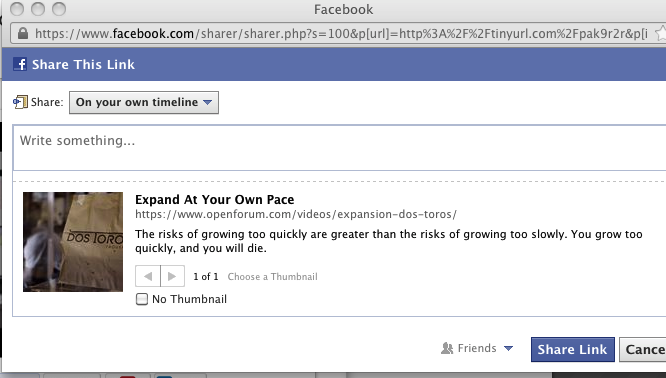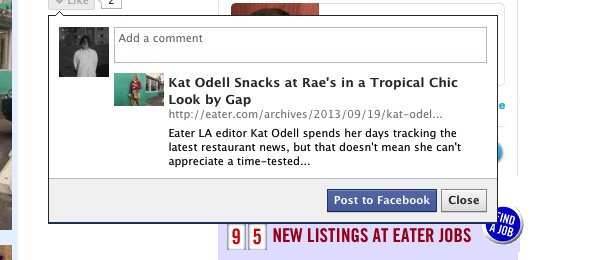The Many Ways Of Hiding An Ad As A “Sponsored Post”
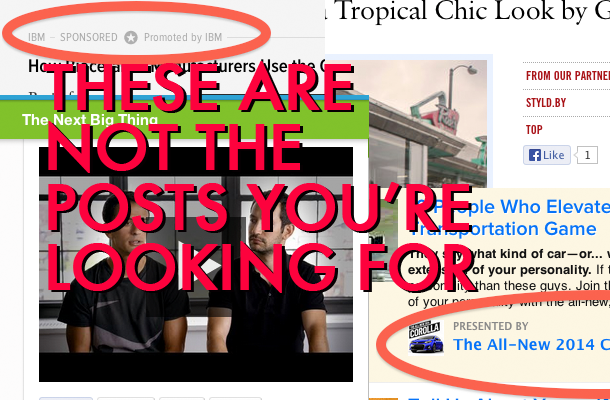 Advertisers have always sought seamless integration of their brands into consumer-targeted content, driven by the notion that the audience is less irritated by a commercial if it doesn’t scream “I’m a commercial.” But at what point does that line get so fuzzy that it’s hard to tell the difference between the two?
Advertisers have always sought seamless integration of their brands into consumer-targeted content, driven by the notion that the audience is less irritated by a commercial if it doesn’t scream “I’m a commercial.” But at what point does that line get so fuzzy that it’s hard to tell the difference between the two?
As we mentioned the other day, the Federal Trade Commission is set to ask that very same question as it looks into the latest iteration of thinly veiled marketing, inanely dubbed “native advertising” by some executive who makes a lot more money than many of us will ever dream of seeing and probably has really nice teeth.
Since we don’t accept advertising, we decided to take a peek around the Internet to see how news sites, all well-regarded in their own fields, manage to toe the line. We found that some sites have no problem planting a big “This is advertising” flag to distance themselves from the content (while also accepting money from the advertiser, of course), while others blur that line like a caffeinated kid holding an Etch-a-Sketch (who did not sponsor this post).
THE OBVIOUS
As mentioned in the previous post, Buzzfeed makes no attempt to hide the fact that these sponsored stories are bought and paid for.
On the Buzzfeed homepage, this post is marked in a distinctly different color with a note that clearly states in big bold letters that this is paid for by Toyota:
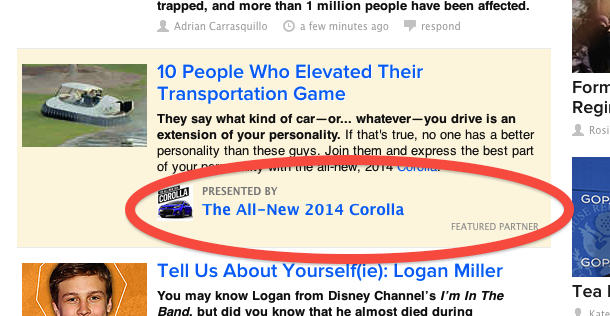
Then on the landing page for the post, it gets an even more Toyota-fied branding, with modules for Toyota’s Facebook and Twitter feeds:
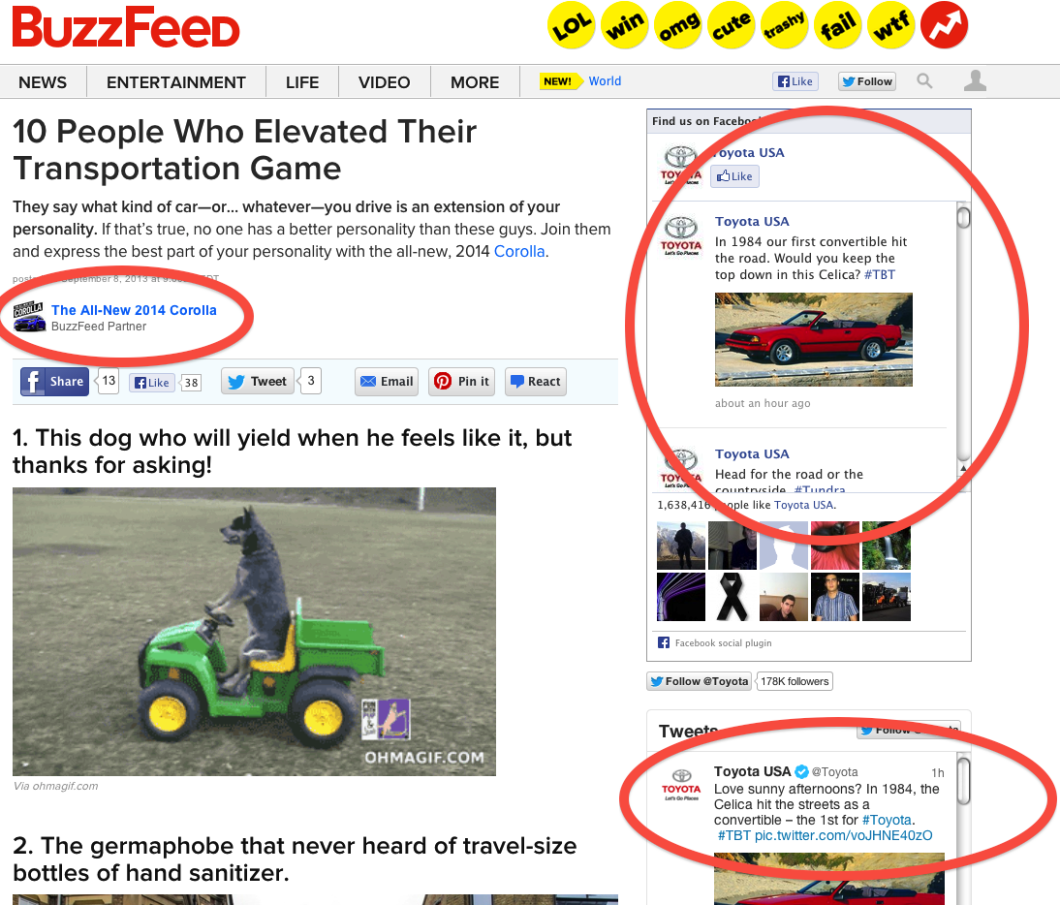
Similarly, the folks at Quartz endeavor to alert readers to the fact that this post about a Boeing submarine is not only sponsored by Boeing, but written by the aircraft giant:

THE MUDDIED WATERS
Over at Consumerist’s former home, Gawker Media, they do go out of their way to indicate a post is sponsored, but not as far as the previous examples.
For example, this post on Gizmodo that was apparently supplied by IBM:
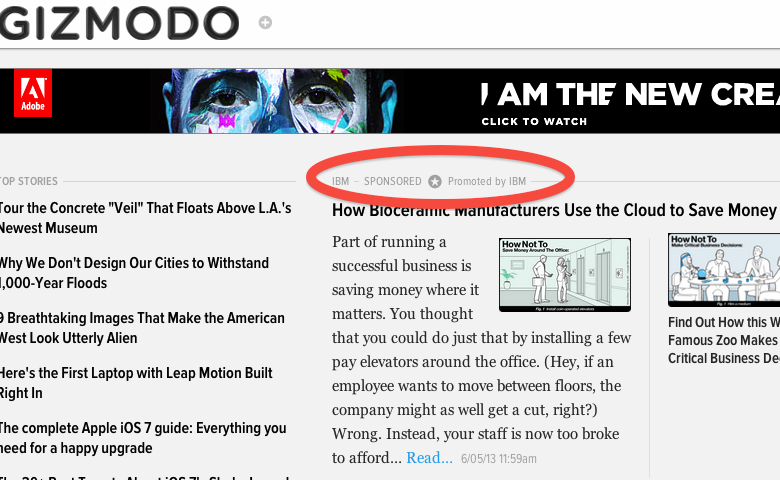
While the byline does indicate that the post was sponsored and promoted by IBM, there are no other visual indicators — like a border or different background color — that immediately signify this as something different than the posts around it on the homepage. Making matters even blurrier, the two other posts linked to immediately under this story’s headline are also sponsored posts from IBM.
On the actual story page, there are more indicators that this is content coming from IBM, such as an IBM avatar with the byline, and a mention at the bottom of the story of it being part of a continuing series from IBM:
THE QUESTIONABLE
Over at Mashable, you’ll find a video in the column marked “The Next Big Thing” that is about some New York restaurateurs discussing the best way to grow their business.
Yes, it does say at the bottom of the box that it’s sponsored by “AMEX OPENFORUM,” but the inclusion of this ad in the Next Big Thing Column (and its repeated inclusion — you’ll see this ad four times if you scroll through the homepage) may lead quick readers to think that this is actual content posted by Mashable.
Even the video does not make it clear that this is an ad for American Express, as the Open Forum info only shows up very briefly twice during the clip. It’s only if you click on a “get more info” link during the video that it actually links out to the Amex site… featuring the same video.
THE EGREGIOUS
Then there’s this headscratcher of a post on Eater.com, featuring the editor of Eater L.A. shilling for Gap:
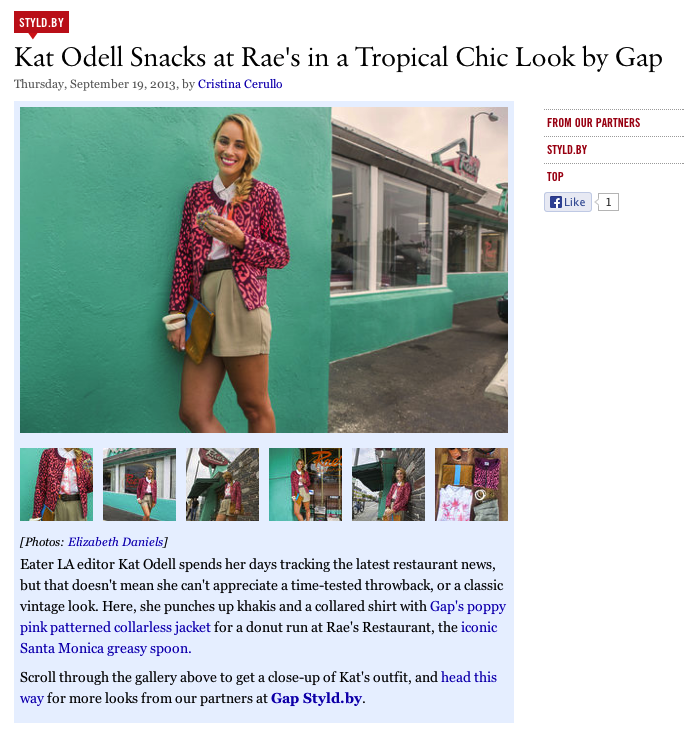
The post uses a blue background, which is different than other posts on Eater’s homepage, but nowhere does it include the word “sponsored,” instead swapping that out for the much friendlier sounding “partner.” In editorial terms, partner has a wide range of meanings. It could mean a corporate business relationship, in the way that Eater is related to parent company Curbed. It could also mean a content-sharing arrangement, or — as in this case — some sort of advertising, possibly revenue-share deal.
Further, the use of an actual Eater editor may cause confusion as you don’t normally see a site’s editor taking part in a paid ad. Then there is the actual text of the post — “time-tested throwback,” “classic vintage look” — which comes across like copy from a Gap sales catalog.
We are regular readers and linkers to Eater, so we reached out to the site’s editorial head to get his feelings on this obvious advertorial content. He passed us on to Curbed Media president Joshua Albertson, who said the ad is transparent enough for his readers.
“In addition to the ‘From Our Partners’ language that appears as a tag in the right column and in the body of the post, the post is shaded blue, which is standard for sponsored copy on the site,” Albertson told Consumerist. “We think this combination is sufficient to indicate that the post is sponsored.”
[UPDATE: Upon further investigation, we noticed that previous stories with the same byline on Eater were all of the advertorial sort, but that some of these posts were not listed as “From our Partners,” but were called out as “Sponsored by” and included the logos of companies like Tanqueray and Revlon.
While this does show that not all sponsored stories on Eater lack transparency, it does seem to indicate that the site is deliberately trying to minimize the transparency of its partnership with The Gap.]
THE SOCIAL MEDIA PROBLEM
Given that none of the above examples use words like “sponsored” in the actual headlines, we wondered if that bought-and-paid-for message was carrying through when readers shared these stories on social media. The answer is no, regardless of how transparent the original site tries to be. Here are how each of the above examples looked when attempting to share on Facebook:
BUZZFEED

So when these stories get shared on Facebook and elsewhere, the “sponsored” messaging isn’t being shared. That means people who would otherwise have not clicked on a post, knowing it was an ad, might click through. While this is not the fault of the websites involved, it is a shortcoming of the Facebook “like” system that works out to the advantage of the advertisers.
Want more consumer news? Visit our parent organization, Consumer Reports, for the latest on scams, recalls, and other consumer issues.


